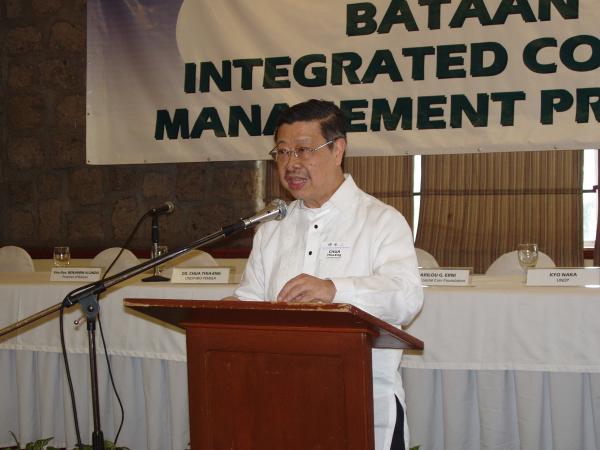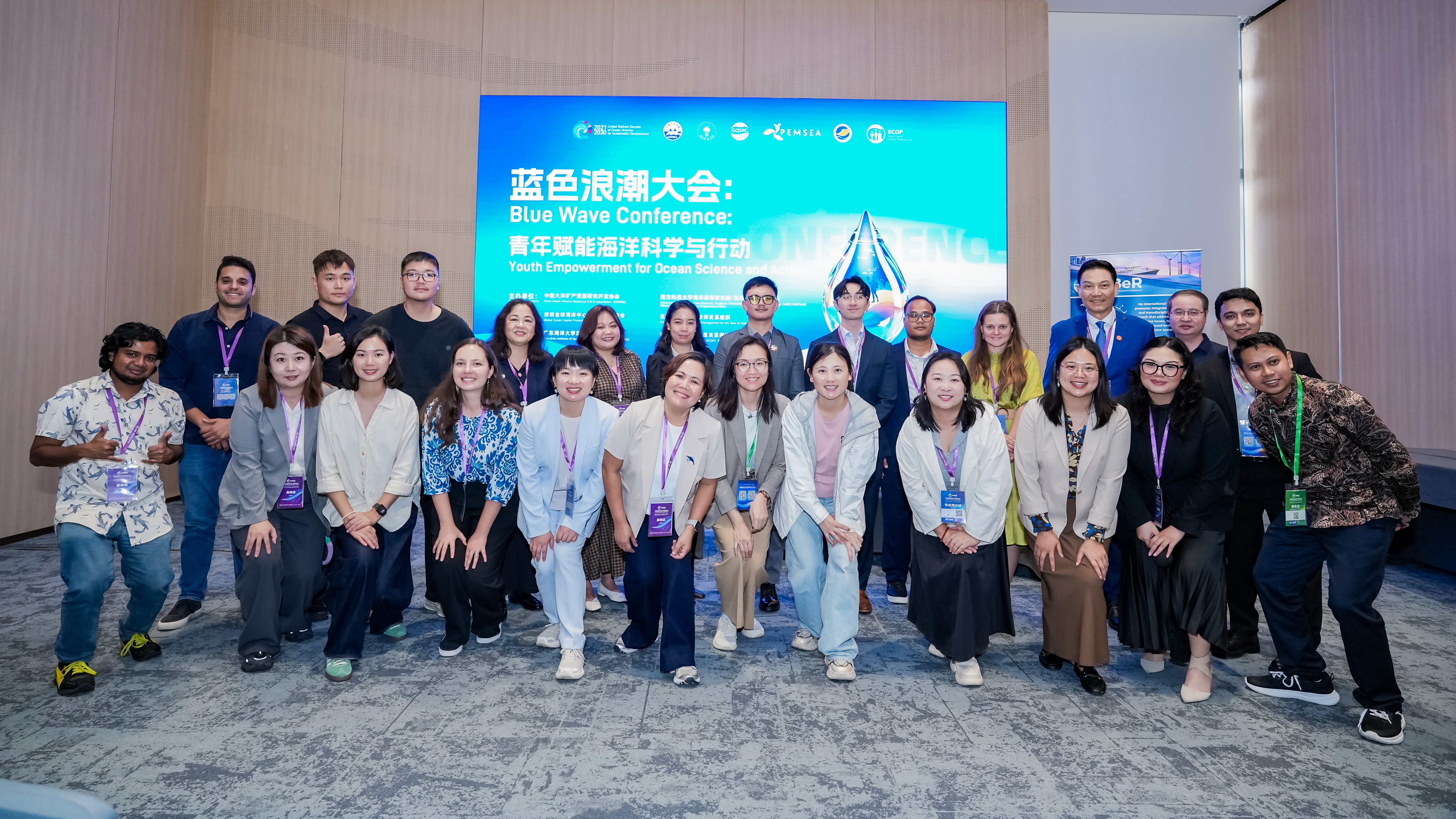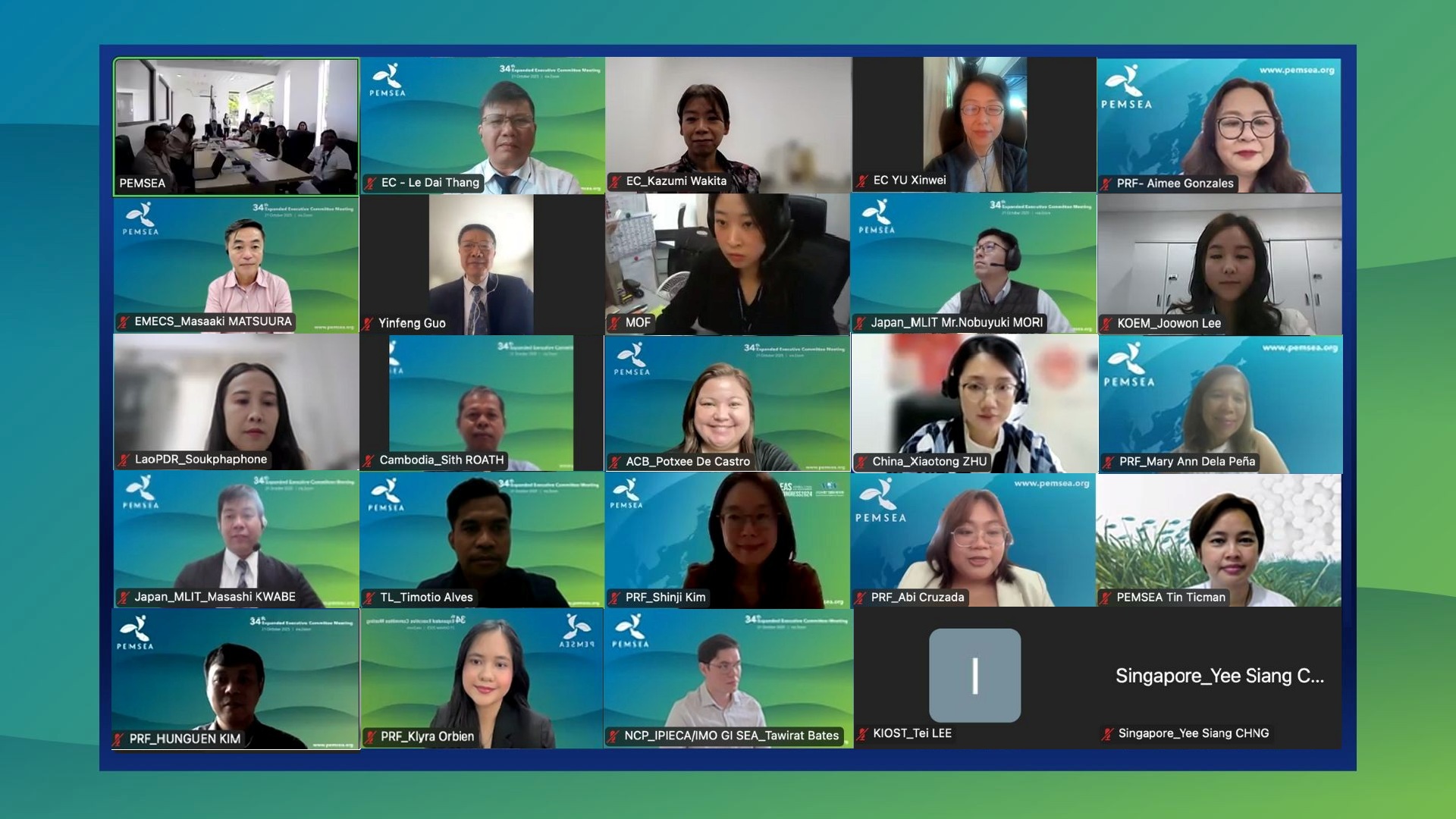Integrated Coastal Management Interview with Dr. Chua Thia-Eng
Thursday, 11 August 2022

The following interview with Dr. Chua Thia-Eng is extracted from The PEMSEA Story, a narrative of PEMSEA’s development and the growth of Integrated Coastal Management (ICM) throughout the seas of East Asia. Dr. Chua was PEMSEA’s first Regional Programme Director of PEMSEA, serving from 1993 to 2007. He continues to work towards regional sustainability, serving as PEMSEA Chair Emeritus and providing advice to actors within the region.
PEMSEA had its beginnings in a regional project on Marine Pollution Prevention and Management. How do you think you were identified as the man for the job?
In 1992, I was working as the Director of Coastal Management and the National Support Division of ICLARM in Manila, Philippines. I was contracted by UNDP New York to lead an international team of experts from the United States, the United Kingdom, Australia, ASEAN, and IMO to develop a GEF regional project on the prevention and management of marine pollution for East Asia.
I was again approached by UNDP and IMO in 1993 to take on the post of Regional Project Manager to implement the project. I was tapped for the job for two reasons: first, I was deeply involved in the framing and development of the regional project, and therefore had full knowledge of its requirements and challenges; and second, I was already familiar with the region and had earlier experience implementing a regional project in ASEAN.
Was the project already envisioned, even at the onset, to become a regional mechanism, and eventually, a truly global organization?
It was clear from the design of the project that a long-term approach was necessary to ensure visible results. For example, the demonstration sites were designed for replication and extension to cover wider coastal areas in the countries and the region. However, there was no consideration yet for setting up a global organization. GEF was in its first phase of operation, and its funding strategies were in the early stage of development, so the thinking at that time was that the project might be able to justify continuation with GEF or other donor support if it performed well.
The idea of establishing a regional mechanism came during the process of developing the Sustainable Development Strategy for the Seas of East Asia (SDS-SEA) at the end of Phase I. It was felt that a regional mechanism, composed of government representatives and other stakeholders, would ensure the inclusion of stakeholders in the implementation of SDS-SEA and other environmental management activities at the local and national levels.
Was the choice of integrated coastal management (ICM) as methodology an obvious one at the time? Was ICM a difficult mindset to propagate in the early years?
Through five years of project implementation at the first two sites in Batangas and Xiamen, we could really appreciate the importance of involving local leaderships and stakeholders and fostering multi-sector cooperation and community involvement.
Based on the lessons of Batangas and Xiamen, the ICM approach was reinforced and further refined into a working model that could be implemented in other coastal areas. The term “ICM” was then adopted as a working methodology for coastal area management in future endeavors.
It took almost three decades of refinement, through the persistent efforts of those involved in project implementation before we arrived at a tested, auditable ICM system that can be used to achieve SDGs.
PEMSEA remains, to this day, an organization not specifically covered by any international convention. How has this been an advantage and a disadvantage at the same time?
PEMSEA was established in consideration of a regional mechanism to implement coastal management practices in achieving sustainable development objectives at the local and national levels in line with Agenda 21 and other related international conventions. The goal was to take a more permanent approach to mobilizing partners to implement the regional strategy under different political, social, and economic conditions.
PEMSEA was envisioned as a regional intergovernmental organization with a bottom-up approach and as such avoided the conventional practice of linking it with a specific convention or UN organization.
There are funding challenges, however; we have to compete for funding support with those that have direct affiliation with conventions or UN organizations. There were also challenges in receiving recognition in the early phase; national support may change or weaken with the change of national governments or in most cases, with changes in priorities of concerned national agencies. Thus, it is important for PEMSEA to remain efficient and effective in program delivery so as to ensure increasing recognition, not only by participating governments but also international and UN organizations.
What do you think PEMSEA has contributed to the awareness and practice of ICM in the region?
I must say that an increasing number of countries in and outside the region have recognized the usefulness of the integrated management approach to address sustainable development challenges at the ground level. In fact, ICM was internationally accepted during the Rio Earth Summit in 1992. The ICM concept and methodology have been increasingly applied throughout numerous sites in the region.
More significantly, the ICM concept has been incorporated into national policies and government planning. Several countries have even established ICM divisions in their local or national government structures.
The organization has been able to continue after my retirement in 2007 and has secured significant progress. The fact that ICM is now applied at 40.4 percent of the region’s coastline as of 2020 is the best testimony to the work of PEMSEA and the acceptance of ICM in resolving sustainable development challenges. Certainly, there is room for improvement, and I am sure that subsequent leaderships will be able to keep the flag flying.
As a parting word for a general readership: Why is sustainable coastal development critical to the future of humanity?
Current and future threats to our natural ecosystems, including those caused by climate change, could wipe out our future and that of coming generations. Over half of the world’s population is residing in coastal areas that are most susceptible to the impacts of sea-level rise, natural disasters, coastal degradation, and the impacts of increasing unsustainable economic development.
The purpose of promoting and implementing sustainable coastal development is not only to ensure that coastal populations are protected from natural and man-made disasters. It is also to ensure that we have a steady supply of ecosystem goods and services for present and future generations.



